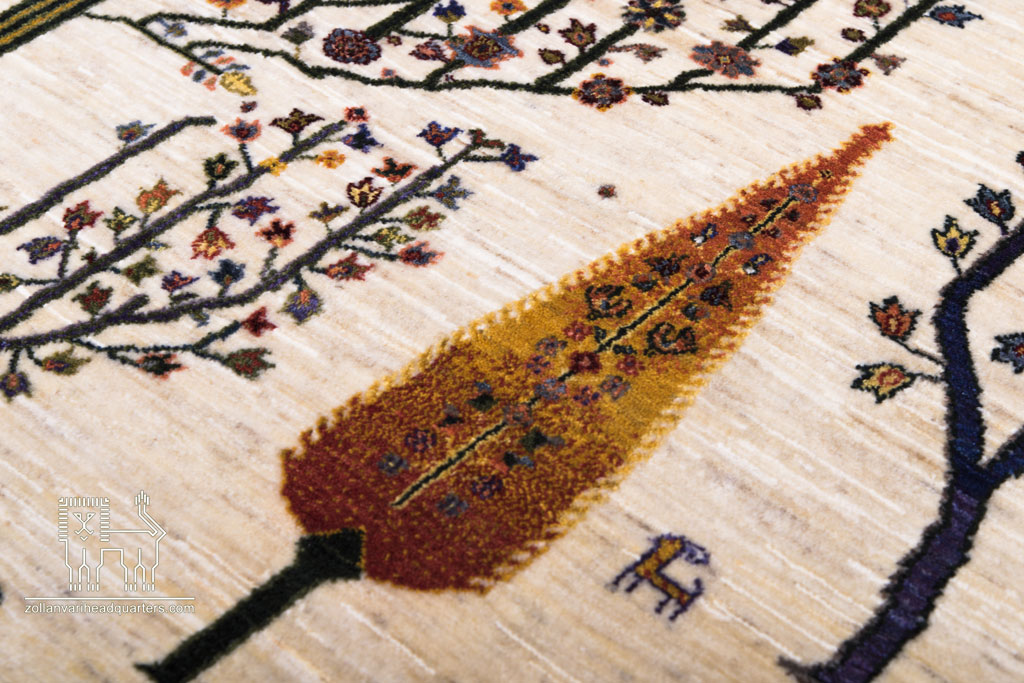The Importance of Iranian Handmade Carpets
Place of handmade carpet | Iranian handmade carpets, symbols of the rich history and culture of this land, have gained a special place in the hearts of people worldwide due to their authenticity and unique beauty. This artistic creation, born from the efforts and creativity of Iranian artisans, serves as a visual language, depicting cultural stories and mysteries. Beyond being a mere consumer good, the carpet itself represents a culture where art, economy, and national identity intertwine. Analyzing and identifying the challenges in this industry is not only essential but can also contribute to the preservation and promotion of this valuable heritage. Iranian carpets not only impact households but also, as an economic resource, bring national prestige and recognition to the country while introducing the world to Iranian creativity and craftsmanship. In this article from the website Zollanvari, we will delve deeper into the significance of handmade carpets, so stay with us until the end.
The History of & place of handmade carpet
To better understand the history and emergence of carpet weaving in Iran, one must look at the oldest known example, the Pazyryk carpet. This artwork, which is considered a horse blanket, was discovered in 1949 by Professor Rudenko in a region called Pazyryk, located in South Siberia’s Altai Mountains, and is now housed in the Hermitage Museum in Saint Petersburg. Professor Rudenko believes that the carpet was the work of the Parthians or Medes, woven in the northern Khorasan region. This piece is significant not only as an ancient artifact but also as a representation of the rich culture and art of ancient Iran.

The Economic Position of Handmade Carpets
Iranian carpets are not just handicrafts; they are deeply connected to the economy of families and the nation. With an annual production of 5 million square meters of various handmade carpets and the export of two-thirds of this volume, the industry is recognized as one of the main pillars of the national economy. High-quality Iranian carpets enhance the country’s global reputation and showcase national creativity and artistry. This industry plays a vital role in creating jobs and generating income, with an estimated value-added rate of about 65%. Additionally, products from this sector represent the largest portion of the country’s non-oil exports, annually helping offset trade balance deficits and bringing significant foreign currency into the country. This not only boosts production volume and gross national product but also strengthens Iran’s economic position in global markets.
The Cultural Position of Handmade Carpets
Carpets, as one of the most prominent cultural achievements, embody various arts that together enrich this traditional craft. Miniature painting, design, illumination, gilding, inlay work, and dyeing are just a few of the artistic fields woven into the creation of carpets, turning this artwork into a symbol of the cultural identity of the nation. Carpets, as a tradition bearer, not only depict the deep emotions and beliefs of the people but also pass on their customs to future generations. From a cultural perspective, no product is as closely associated with Iran as the carpet. A large part of this land’s art and civilization is tied to it. With a history spanning nearly three thousand years, carpet production not only reflects indigenous technology but also showcases the richness of its designs and patterns across various regions of the country. This art serves as an effective tool for conveying Iran’s values and rich culture to other societies.
Final Words
Iranian handmade carpets, symbols of this land’s rich history and culture, hold a special place globally. As a visual language, this authentic art narrates cultural stories and mysteries, deeply tied to the economy, while strengthening national identity. If you plan to purchase a high-quality Gabbeh, be sure to pay attention to the source, as today’s market has grown increasingly diverse.


Write a Comment